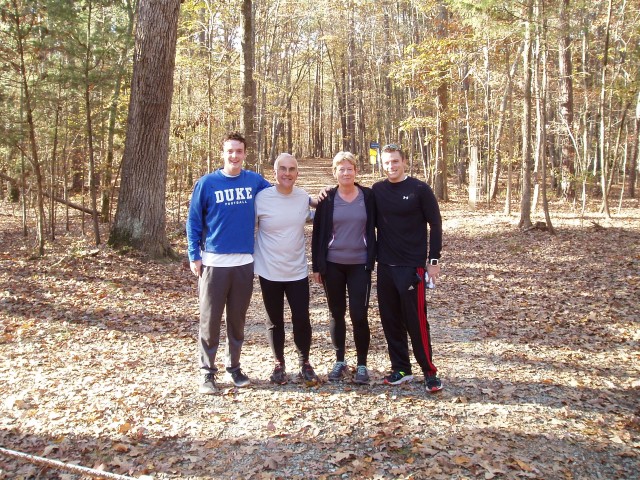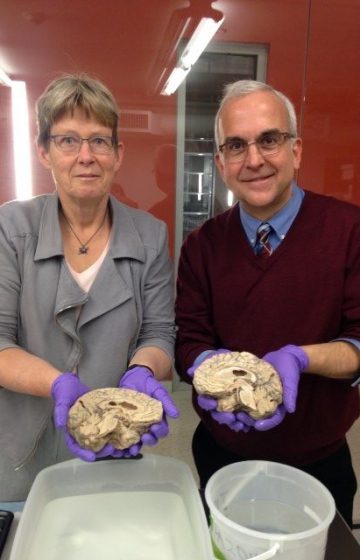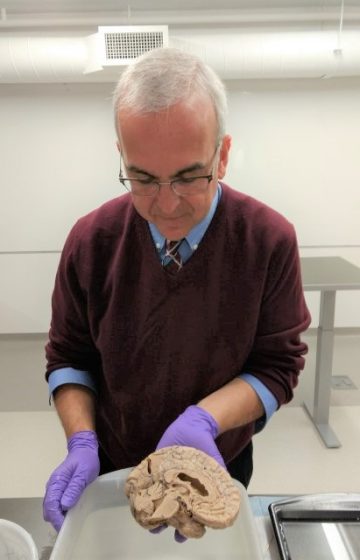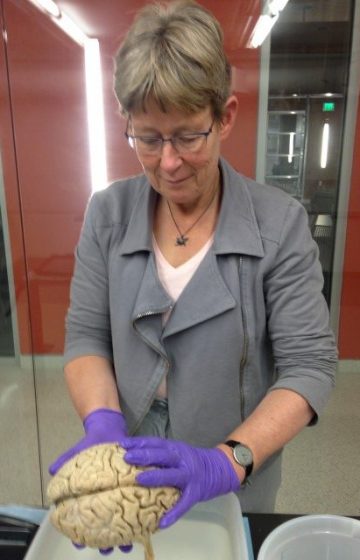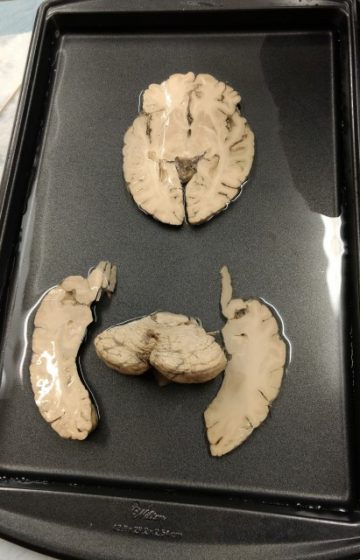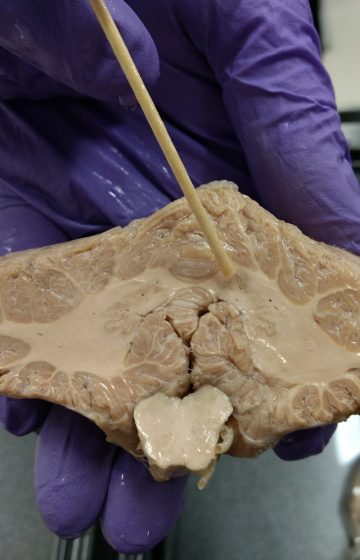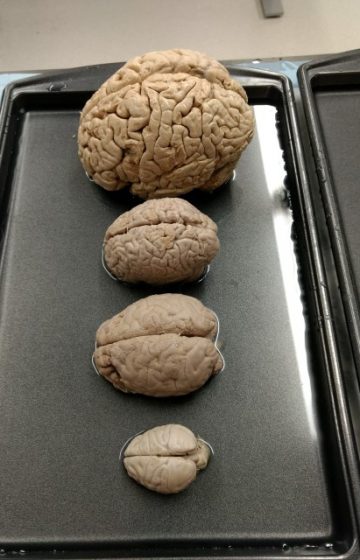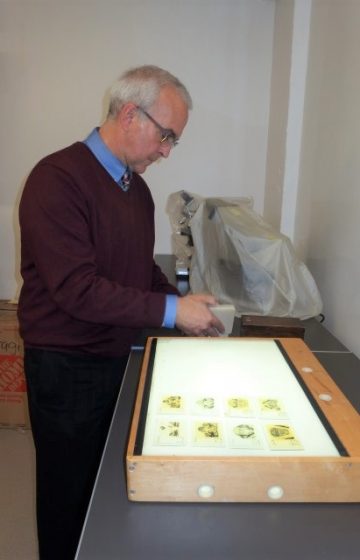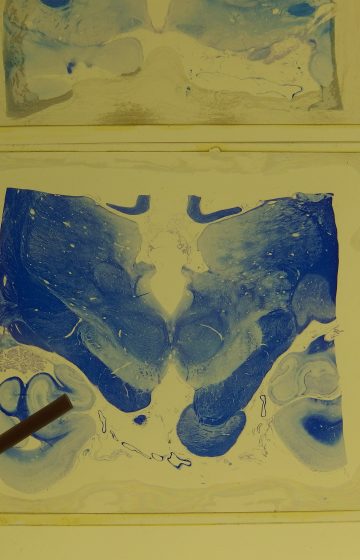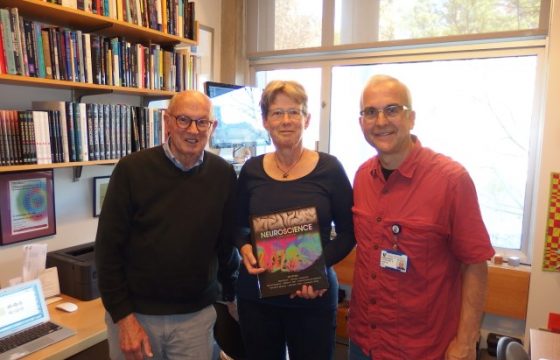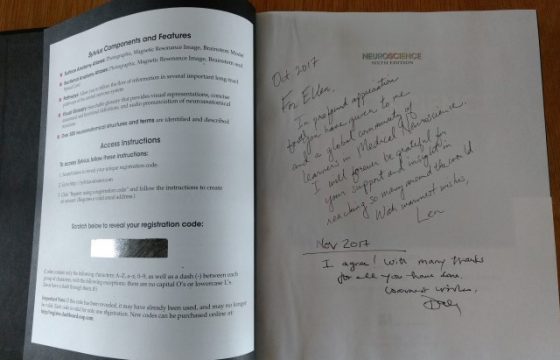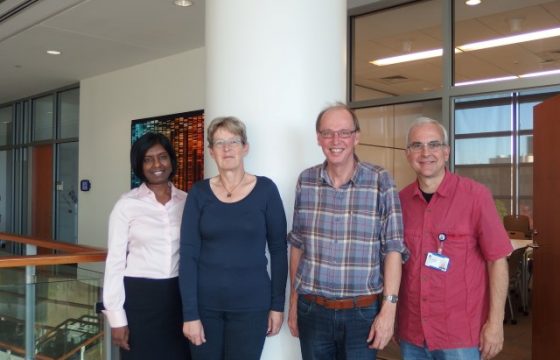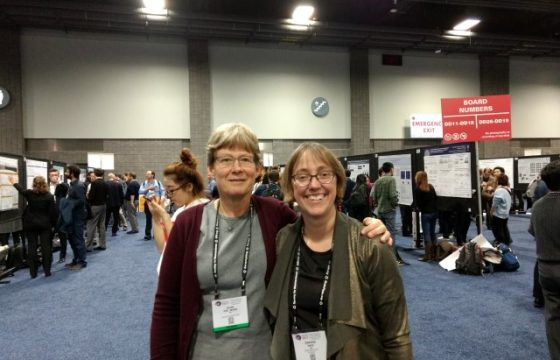DIBS
After our visit to Washington, for the annual meeting of the Society for Neuroscience 2017. Prof. White took my husband and me to Durham. There we visited Duke University and DIBS (Duke Institute for Brain Sciences).
Highlight of that visit was the personal Neuroanatomy Lab with prof. White. There was a special emphasis on the Hippocampus. A brain structure that is essential in the research proposal I wrote in the context of the specialization ‘Neuroscience‘ .
Ellen Vos-Wisse (2015): Exercise and traumatic brain injury. Neurogenesis, wayfinding and memory.
Therefore in the images below the structure indicated by a pointer is the Hippocampus.
It really gave additional insight to have a good look at an actual brain and get direct feedback of prof. White. It was only unfortunate that the annual meeting of the Society for Neuroscience where I went to the days before was not only stimulating and energizing but also exhausting. My memory was playing tricks on me and I wish I had been mentally top fit at this lab experience.
The primate brains I saw at the lab were amazing. The delicate sulci and gyri in the chimpanzee prefrontal cortex are astonishing. The gorilla, in which the ratio forebrain:cerebellum seemed smaller than in human and chimpanzee. It made me so curious how the brains of the orang-utan and the gibbon would look.
Friends and Familiar places
I had already met prof. Groh at the conference and met more digital friends in Durham. We saw a lot of places that we already met in the course. First I met Sulochana Naidoo, she was Course Staff at Duke University in 2014 when I first was Teaching Assistant and she helped me a lot. I was very pleased to meet her in person. I also met Prof. Purves . He and prof. White signed my copy of the sixth edition of the textbook.
Sulochana with family and Willie Williamson (also Course Staff a few years back) and family met with Prof. White and his family at prof. Whites house for a lovely dinner.
Campus
After our visit to DIBS we went to have a look on campus. Prof. White showed us the technical departments of the University because my husband, Hans, has a technical background. There was a final surprise there. We walked past DiVE (Duke immersive Virtual Environment). The DiVE offers a fully immersive experience to the user, who literally walks into the virtual world. There is also a virtual brain structure . Prof. White was explaining how he uses it for his students when the technical operator invited us in.
We walked into a little room equipped with stereo glasses and found the virtual brain as big as a person. Prof. White manipulated it with a virtual wand. It was magic (Harry Potter could really learn from this performance 🙂 ).
We could explore the basal ganglia and hippocampus, viewing it from different angles. Brain structures were added and taken of to make viewing of hidden places possible or could provide a good overview. It was not planned session and quite a surprise. It was a fantastic end to the wonderful experience of visiting DIBS.
Neurrun
Before taking the plain home I had a wonderful opportunity to join a neurrun in Duke Forrest.
The neurrun has two rules: The talk must be about the brain and the group must stay together. In the run were Ryan, with some in depth talk about the basal ganglia and Daniel with information about a new diagnose for concussion in football.
The second rule caused a unusual neurrun with quite a bit of walking. A period without training and my attempt to maximize my experiences at SfN2017 were not a good preparation for a serious run. Also the Netherlands is as flat as a pancake and Durhams hills were quite an experience for me so I did not really do so good as I had hoped. That said I would not have missed it for the world but if I ever join again I want to be better prepared.
